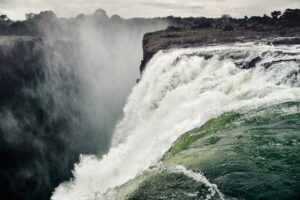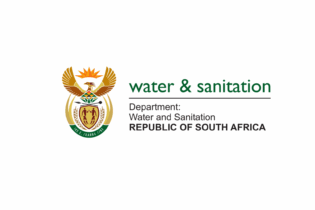The water reservoirs in most parts of the country are still at satisfactory high levels, despite a minor drop in some. This was revealed in a weekly report on the state of reservoirs in the country issued by the Department of Water and Sanitation this week.
The volume of water stored in the reservoirs of most provinces is still at satisfactory levels at 92.1% this week, despite a slight decrease from last week’s 92.3%. The water levels have however improved from last year’s 81.2% mark at this time. According to the Departmental Spokesperson, Sputnik Ratau, the reservoirs in Gauteng, Northern Cape, and Free State provinces are still at satisfactory levels. Despite a slight decrease in the dam levels in Gauteng Province, they are still at high levels with 97.5% this week, compared to last week’s 98.35%. Free State dam levels have decreased from 99.6% last week to 99.0% this week. Northern Cape provincial water levels continue to rise with a record of 107.0% this week, an improvement from last week’s 106.9%. Eastern Cape water levels have slightly improved with the provincial water storage at 70.7% this week, from last week’s 70.2%. The Algoa Water Supply System with dams supplying the Nelson Mandela Bay has also slightly improved but remains at a very low level of 15.5% this week. Last week it was standing at 15.1%. Nelson Mandela Bay Metropolitan (NMBM) is experiencing a severe drought which has adversely affected the local dams that supply water to the area. Kouga Dam which supplies the Nelson Mandela Bay is very low with 16.8% this week, a slight increase from last week’s 16.7%. Last year at this time, it was at its critically low levels of 5.1%. Loerie Dam is at 58.1% this week, dropping from 58.4% last week. Impofu Dam is at a very low level of 10.1% this week, a slight increase from last week’s 10.0%. Groendal Dam has dropped to 20.3% this week, from 20.6% last week. The low water levels in these reservoirs have resulted in a serious challenge of water supply to the residents of NMBM. However, the Minister of Water and Sanitation, Senzo Mchunu, and the Nelson Mandela Bay Metropolitan Municipality’s Executive Mayor Councillor Eugene Johnson are working with various stakeholders in both the public and private sectors to ensure a water-resilient Nelson Mandela Bay Metropolitan Municipality, and surrounding areas. Ratau said the Minister of Water and Sanitation has called on all parties to double their efforts to avert day zero and overcome drought. He said the Minister stressed the desire to have a water-resilient Nelson Mandela Bay Metropolitan Municipality “Minister Mchunu has called for private-public partnerships to mitigate water challenges as result of persistent drought in Nelson Mandela Bay. The Minister also said that the completion of Nooitgedacht Water Scheme’s Phase 4 will give the people of Nelson Mandela Bay Metropolitan Municipality sustainable water supply, especially following the success of Phases 1-3”, said Ratau. Ratau continued to encourage the residents to use water sparingly so that there can be low water usage in the area as this will also assist to expedite the completion of the emergency pumping across the City. KwaZulu-Natal province has seen a decrease in its water levels from last week’s 88.5% to 88.1% this week.Hazelmere Dam has slightly decreased from last week’s 48.5% to 48.3% this week. Midmar and Nagle Dams situated in Mgeni River are satisfactorily at high levels of 94.4% and 97.5% respectively this week. Spring Grove has slightly dropped from last week’s 100.2% to 99.7% this week. Craigie Burn Dam has remained unchanged with 100.5% this week.
Ratau has however appealed to water users in the provinces with dam water storage at full capacity or satisfactory levels to continue to use water sparingly and conserve water as much as they can to ensure water security in their provinces. However, it is noted that the water storage in Western Cape has experienced a huge increase this week to a staggering 69.2% this week from last week’s 64.6%. The dam levels in the Western Cape were standing at 88.0% last year at this time. “Water Supply Systems with dams supplying water to the City of Cape Town have reached their 100% full capacity and have remained unchanged this week,” Ratau further explained. North West province has also declined in its water levels, from last week’s 79.6% to 79.2% this week. The provincial water levels have improved in comparison with the levels of 78.7% last year during this period. Klipvoor Dam has slightly increased by 100.4% this week. Bospoort Dam has slightly decreased from last week’s 101.9% to 101.4% this week. Buffelspoort Dam is also at its full capacity, with a minor decrease from last week’s 100.1% to 99.3% this week. Mpumalanga dam levels have decreased from last week’s 94.5% to this week’s 94.2%. This is an improvement from when the province’s water levels were standing at 81.0% last year at this time. Westoe Dam in Usutu river has declined from last week’s 86.6% to 84.7% this week. The province’s Nooitgedacht Dam has also declined to 99.7% this week, from last week’s 100.0%. Vygeboom Dam has increased to 99.6% this week, compared to 98.5% this week. Kwena Dam is full and has remained unchanged at 100.0% this week. Longmere Dam has declined from last week’s 98.7% to 96.3% this week. Water levels in Limpopo have also slightly decreased, recording 87.2% this week compared to last week’s 87.7%. Flag Boshielo Dam has slightly decreased from last week’s 101.1% to 100.6% this week. In Mopani Region, a critically low Middel-Letaba Dam continues to drop and is at 1.1% this week, compared to last week’s 1.3%. The biggest dam in Limpopo, De Hoop is at its full capacity at 100.1% this week, a slight decrease from last week’s 100.2%. Tzaneen continued to drop and is now at 96.8% this week from last week’s 99.8%. Free State dam levels have slightly decreased from last week’s 99.6% to 99.0% this week. Fika Patso Dam, which supplies the residents of Phuthaditjhaba in QwaQwa, has dropped to 83.8% compared to last week’s 84.2%. Free State’s and the country’s biggest dam, Gariep, has slightly declined from last week’s 97.7% to 97.2% this week. The country’s water levels are on a downslide, as would be expected coming out of the winter season, and the Department of Water and Sanitation urges water consumers to continue to use water sparingly and save water at all costs.







